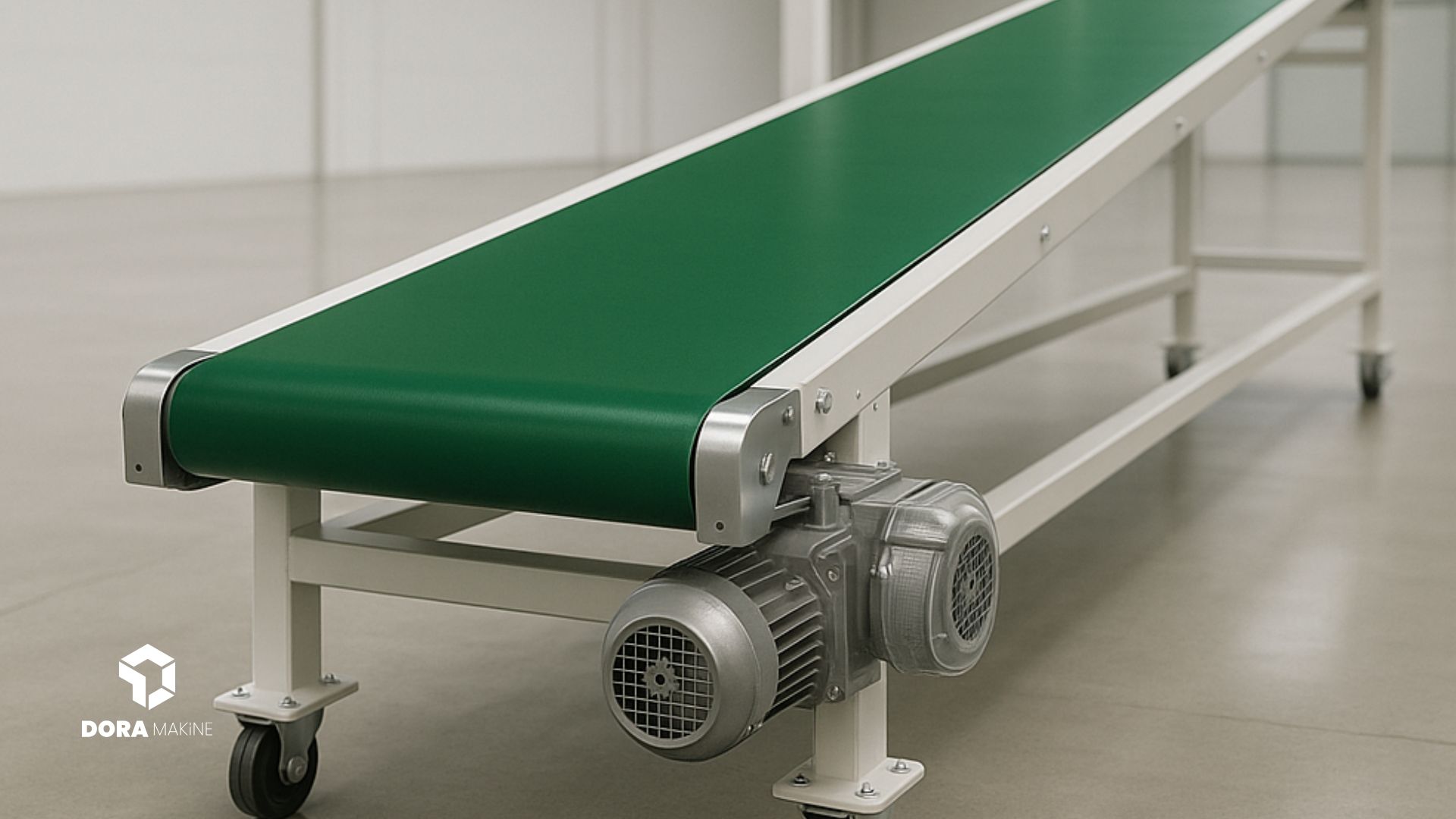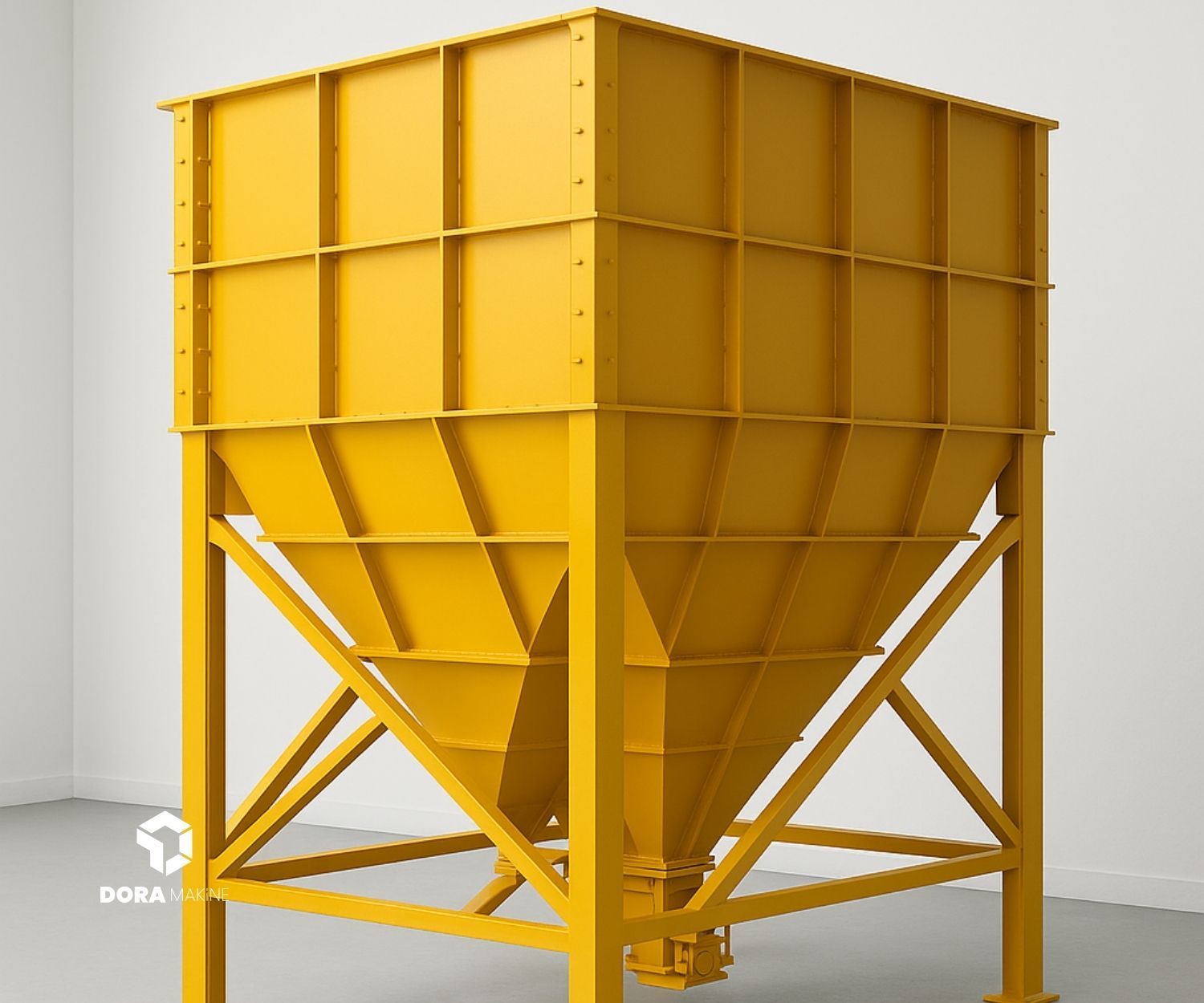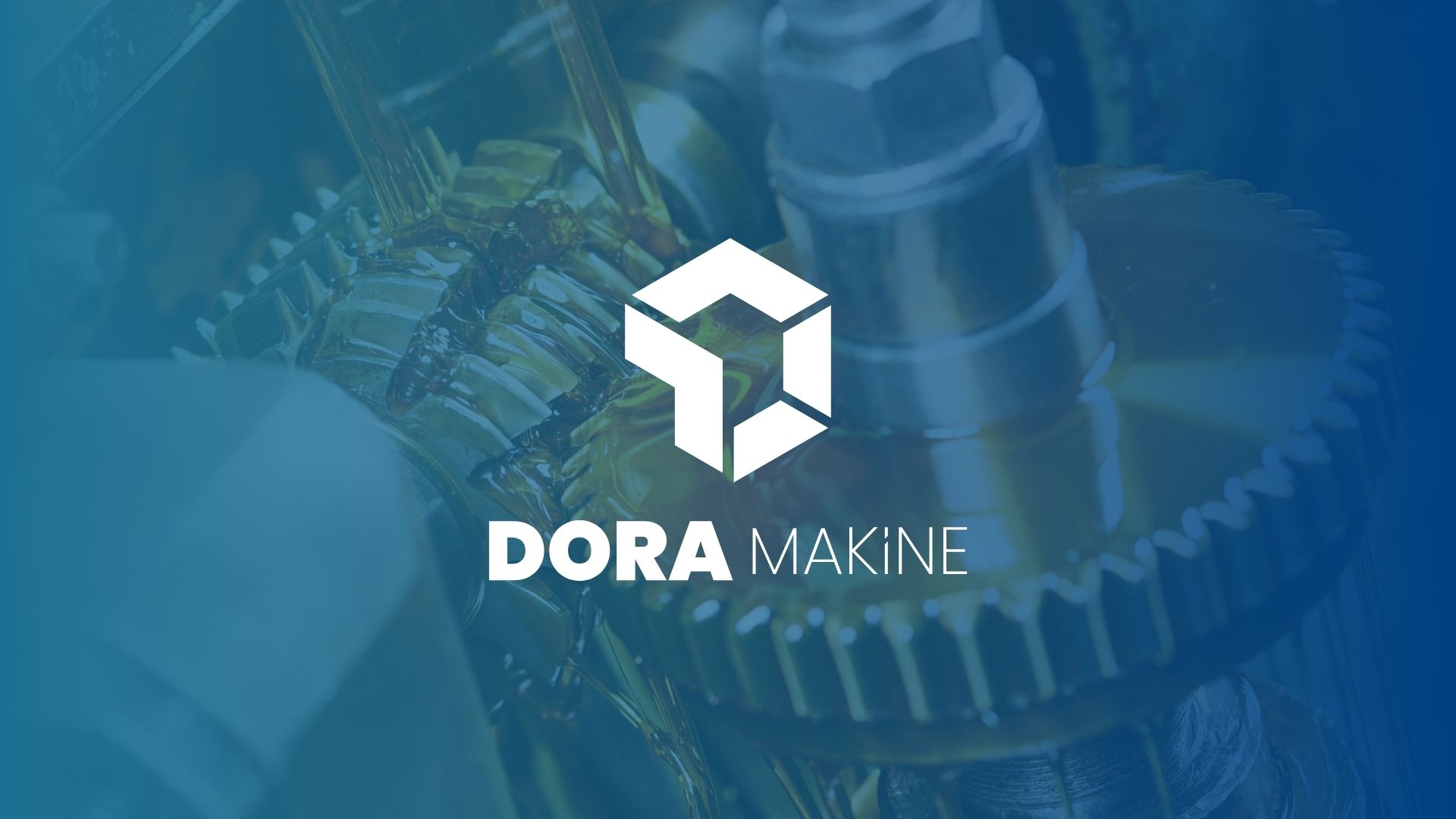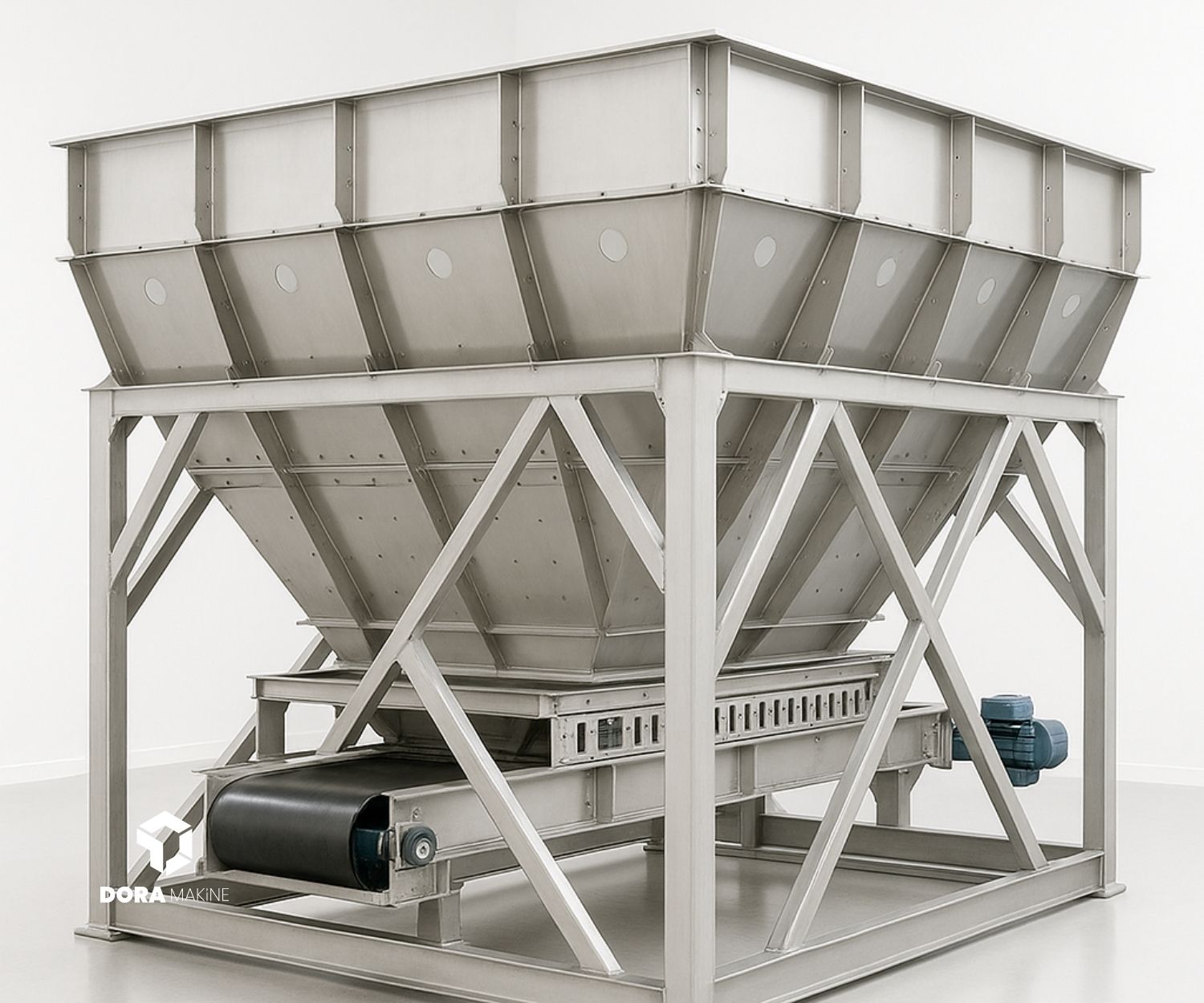
Belt conveyors are transportation systems commonly used in factories, warehouses, and various industrial areas to carry materials. This system consists of materials placed on a belt that moves the transported products from one point to another at a constant speed. Belt conveyors are one of the most important components of automation systems in the transportation of different types of materials. These systems play a critical role in industrial facilities by speeding up manufacturing processes, reducing labor costs, and making production more efficient.
Basic Operating Principle of Belt Conveyors
Belt conveyors transport materials placed on a continuously moving conveyor belt driven by an electric motor. The basic operating principle of the system begins with the motor transmitting power to a drive drum. This drum moves the conveyor belt and ensures that products are transported throughout the system.
In this system, the upper surface of the conveyor belt is usually made of durable materials such as rubber, PVC, or polyester. The conveyor belt allows products to be transported along a straight path or an inclined line. In addition, belts can operate at various speeds, which can be optimized depending on the type, amount, and distance of the transported materials.
Many belt conveyors are integrated with various sensors and motors. This enables operations such as product tracking, speed adjustment, and automatic stopping in case of errors. These features are particularly useful in large-scale industrial production facilities, as they allow rapid detection and resolution of disruptions in the production line.
Applications and Usage Areas of Belt Conveyors
Belt conveyors have a very wide range of applications and are used in different sectors for different needs. These systems play a critical role in all industrial processes related to transportation. For example, they are widely used in industries such as automotive manufacturing, food processing, mining, and textiles.
- Automotive Industry: Belt conveyors are frequently used in automobile assembly lines for part transportation and assembly stages. This speeds up production and reduces the rate of defective products.
- Food Processing: In the food industry, belt conveyors are used especially in packaging and shipping stages, where hygiene and efficiency are critically important.
- Mining: In underground mines, the transportation of rocks and other minerals becomes more efficient thanks to belt conveyors.
- Textiles and Apparel: During textile production, belt conveyors are preferred for transporting and processing fabrics.
- Storage and Distribution: In large warehouses, belt conveyor systems are frequently used to transport and organize products in an orderly manner.
So, what are the common features of belt conveyors used in every industry? Factors such as speed, durability, and flexibility, which increase efficiency, are equally important in all these industries. Selecting and optimizing these systems correctly ensures the fast and safe transportation of products.
Belt Types and Selection Criteria
For belt conveyors to operate efficiently, choosing the right type of belt is extremely important. The belt type should be determined based on the characteristics of the products to be transported. For example, in a system where heavy loads will be transported, a strong and durable belt must be chosen. Belt types used for belt conveyors generally vary depending on the type of material and transportation conditions.
- Flat Belts: One of the most commonly used belt types. Ideal for transporting light and medium loads.
- Steel Cord Belts: Suitable for heavy-duty and high-temperature environments, these belts are reinforced with steel cords.
- Modular Belts: Made of plastic modules, these belts are easy to assemble and durable. They are often preferred in the food industry.
- Rubber Belts: Rubber material with high durability is used especially for transporting heavy and abrasive materials.
One of the most important factors when selecting a belt type is the distance and slope at which the product will be transported. For example, in vertical transportation processes, belt types suitable for slopes should be used. In addition, durability of the belts, motor power, and environmental factors also play an important role in selection.
Efficiency and Energy Efficiency in Belt Conveyors
The efficiency of belt conveyors plays a very important role in production processes. An efficient belt conveyor system reduces labor costs while also increasing production speed. However, one of the most critical ways to improve efficiency is to ensure energy efficiency. Energy efficiency not only reduces costs but also provides an environmentally friendly production process.
To increase the energy efficiency of belt conveyors, the correct motor power and speed adjustments must be made. Motor power should be selected according to the conveyor’s carrying capacity and speed. In addition, regularly optimized maintenance processes allow the system to operate more efficiently.
Another important factor in ensuring energy efficiency is minimizing friction. Friction may cause the motor to consume more energy. Therefore, the belts should run smoothly and regularly, and maintenance should be carried out on time. Proper distribution of loads on the conveyor belt can also increase energy efficiency.
In conclusion, belt conveyors play a critical role in accelerating industrial production and increasing efficiency. However, there are many factors that must be considered to ensure the correct selection of these systems and energy efficiency. These factors should be taken into account to minimize both costs and environmental impact.



